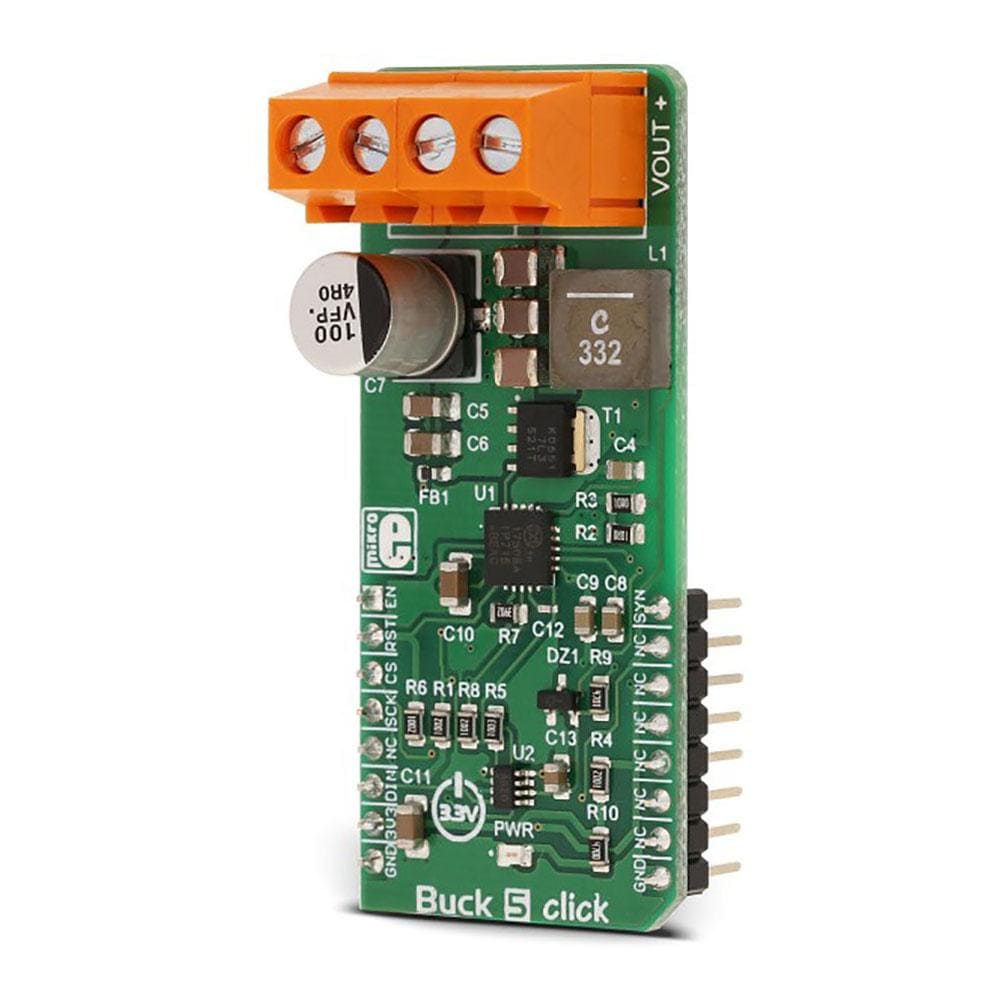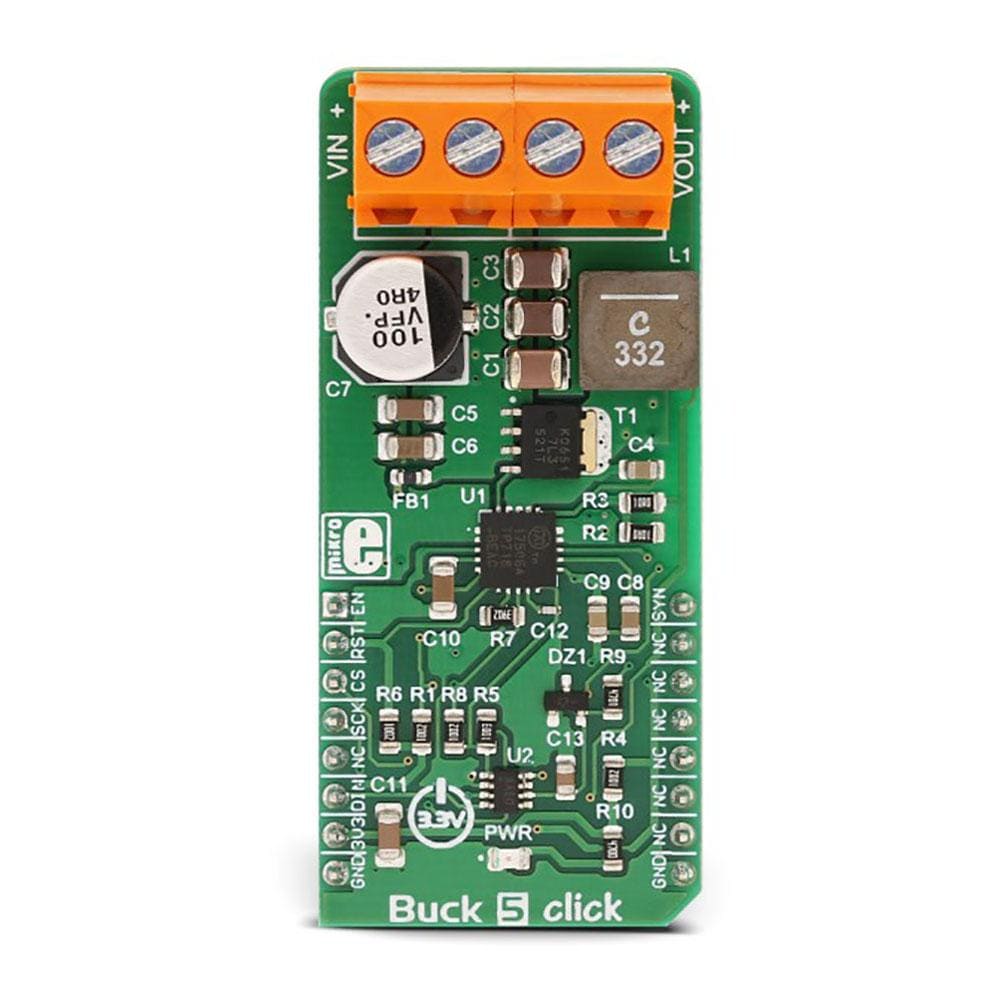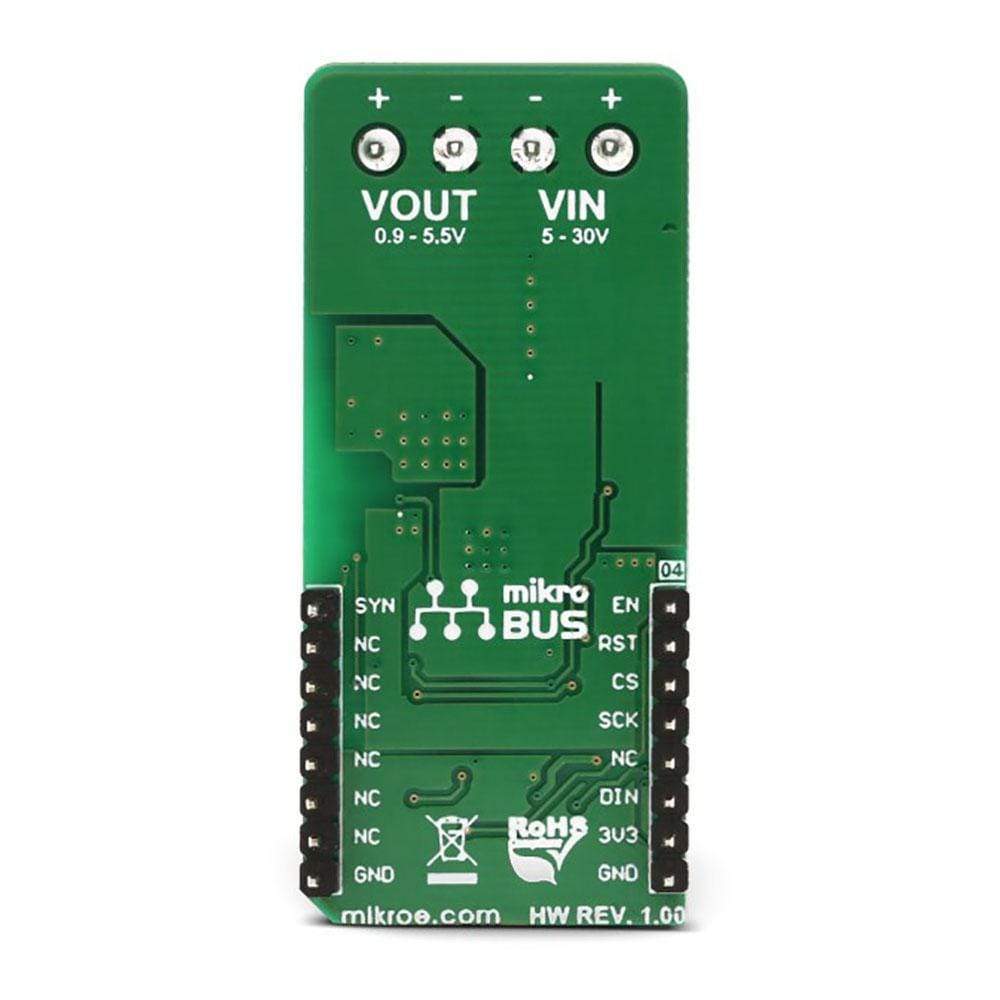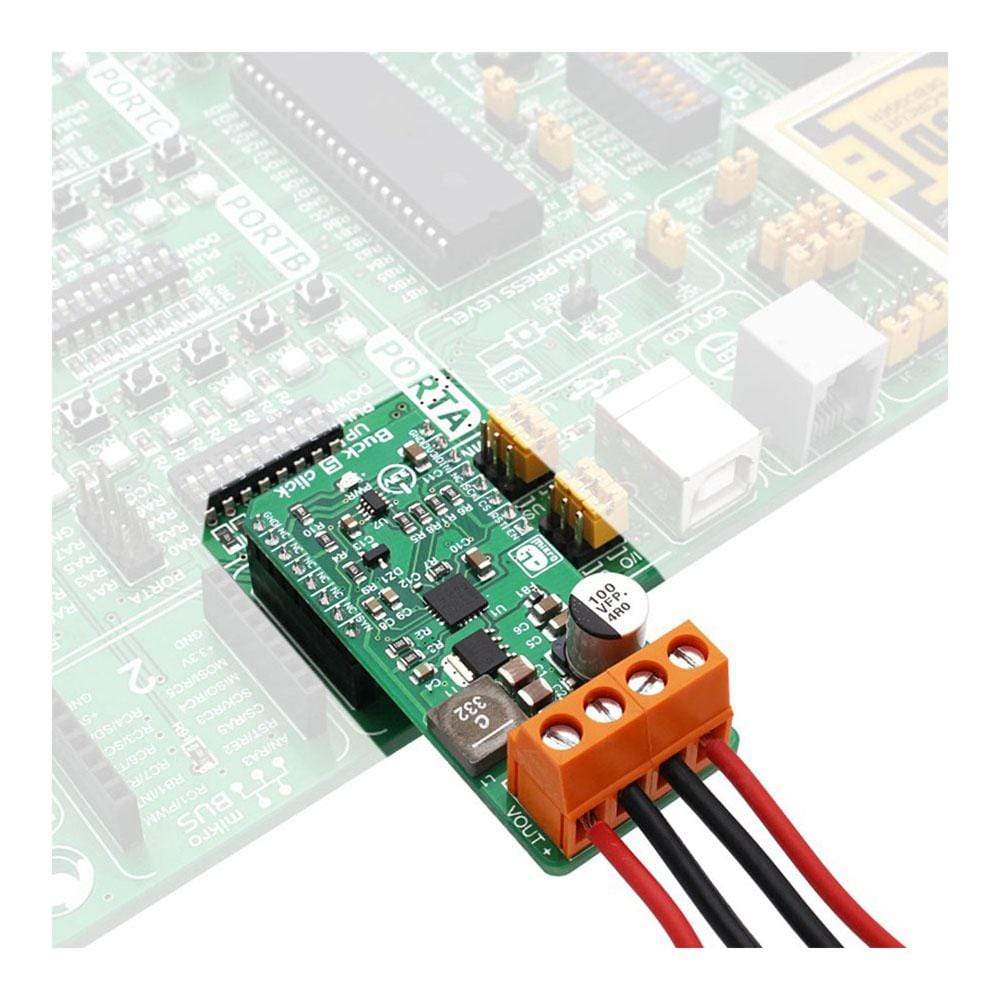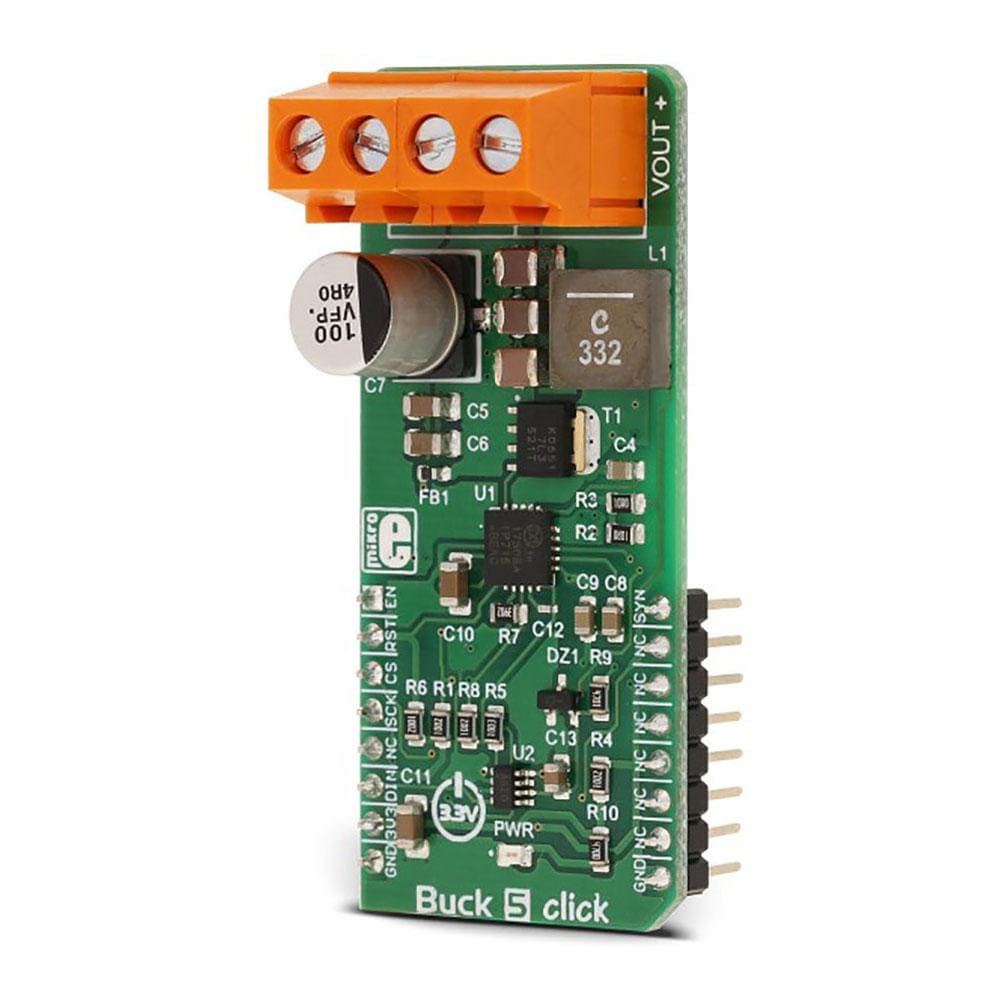
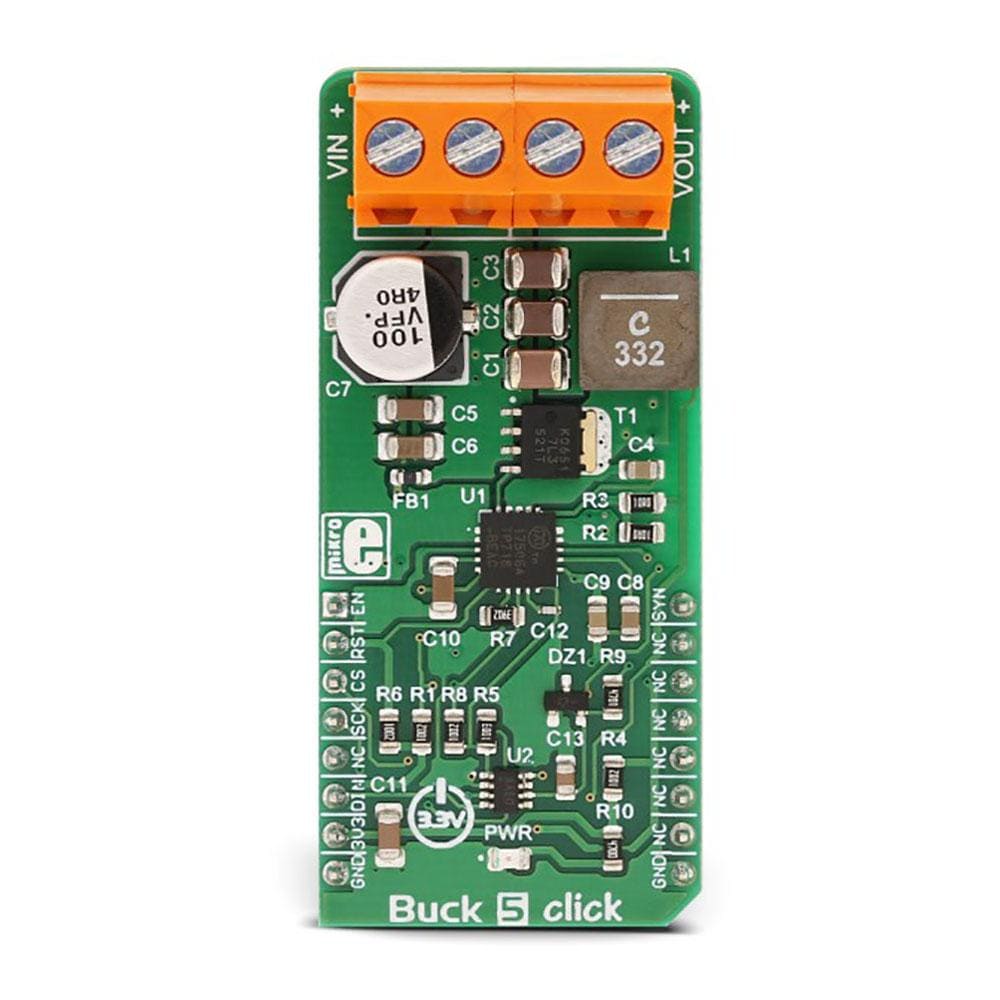
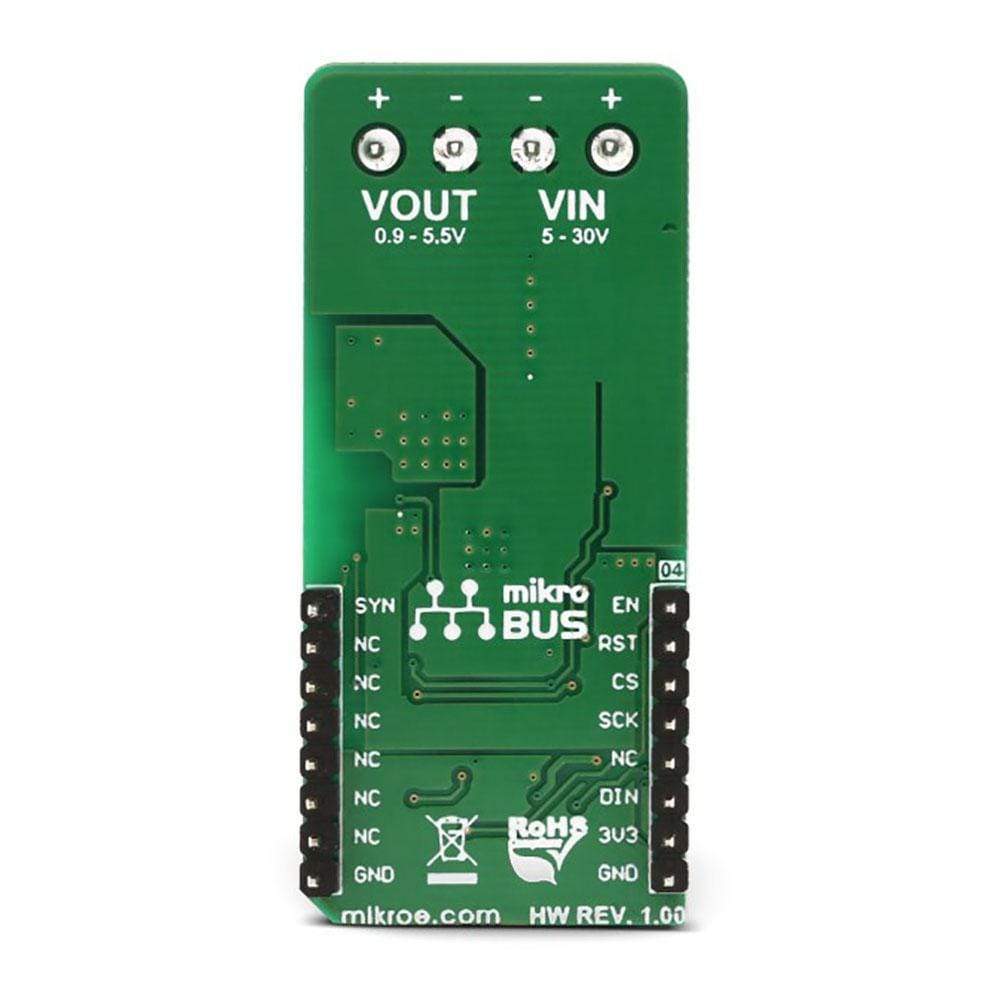
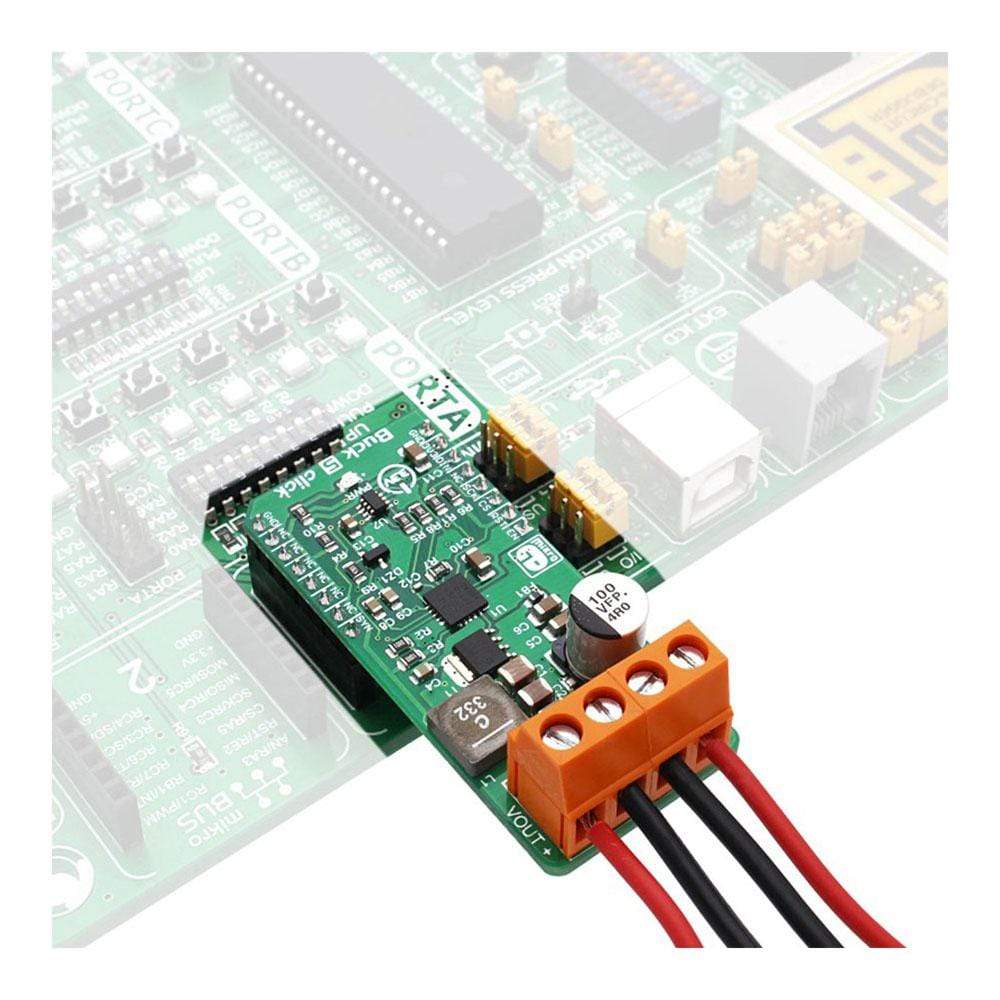
Overview
The Buck 5 Click Board™ is a high-efficiency buck (step-down) DC/DC converter, which can provide digitally adjusted step-down voltage on its output while delivering a considerable amount of current. Buck 5 Click Board™ accepts a wide voltage range on its input - from 5V to 30V. The output voltage may be adjusted via the SPI interface, in the range from 0.9V to approximately 5.5V. This Click Board™ utilises the MAX17506, an integrated high efficiency, synchronous step-down DC/DC converter with internal feedback compensation, from Maxim Integrated. In addition, the MAX5401 digital potentiometer with SPI Interface is used on the feedback loop allowing digital control of the output voltage.
Downloads
Das Buck 5 Click Board™ ist ein hocheffizienter Abwärts-DC/DC-Wandler, der an seinem Ausgang eine digital angepasste Abwärtsspannung bereitstellen und gleichzeitig eine beträchtliche Strommenge liefern kann. Das Buck 5 Click Board™ akzeptiert einen großen Spannungsbereich an seinem Eingang – von 5 V bis 30 V. Die Ausgangsspannung kann über die SPI-Schnittstelle im Bereich von 0,9 V bis ca. 5,5 V eingestellt werden. Dieses Click Board™ verwendet den MAX17506, einen integrierten hocheffizienten, synchronen Abwärts-DC/DC-Wandler mit interner Rückkopplungskompensation von Maxim Integrated. Darüber hinaus wird das digitale Potentiometer MAX5401 mit SPI-Schnittstelle in der Rückkopplungsschleife verwendet, was eine digitale Steuerung der Ausgangsspannung ermöglicht.
| General Information | |
|---|---|
Part Number (SKU) |
MIKROE-3100
|
Manufacturer |
|
| Physical and Mechanical | |
Weight |
0.028 kg
|
| Other | |
Country of Origin |
|
HS Code Customs Tariff code
|
|
EAN |
8606018713288
|
Warranty |
|
Frequently Asked Questions
Have a Question?
Be the first to ask a question about this.

